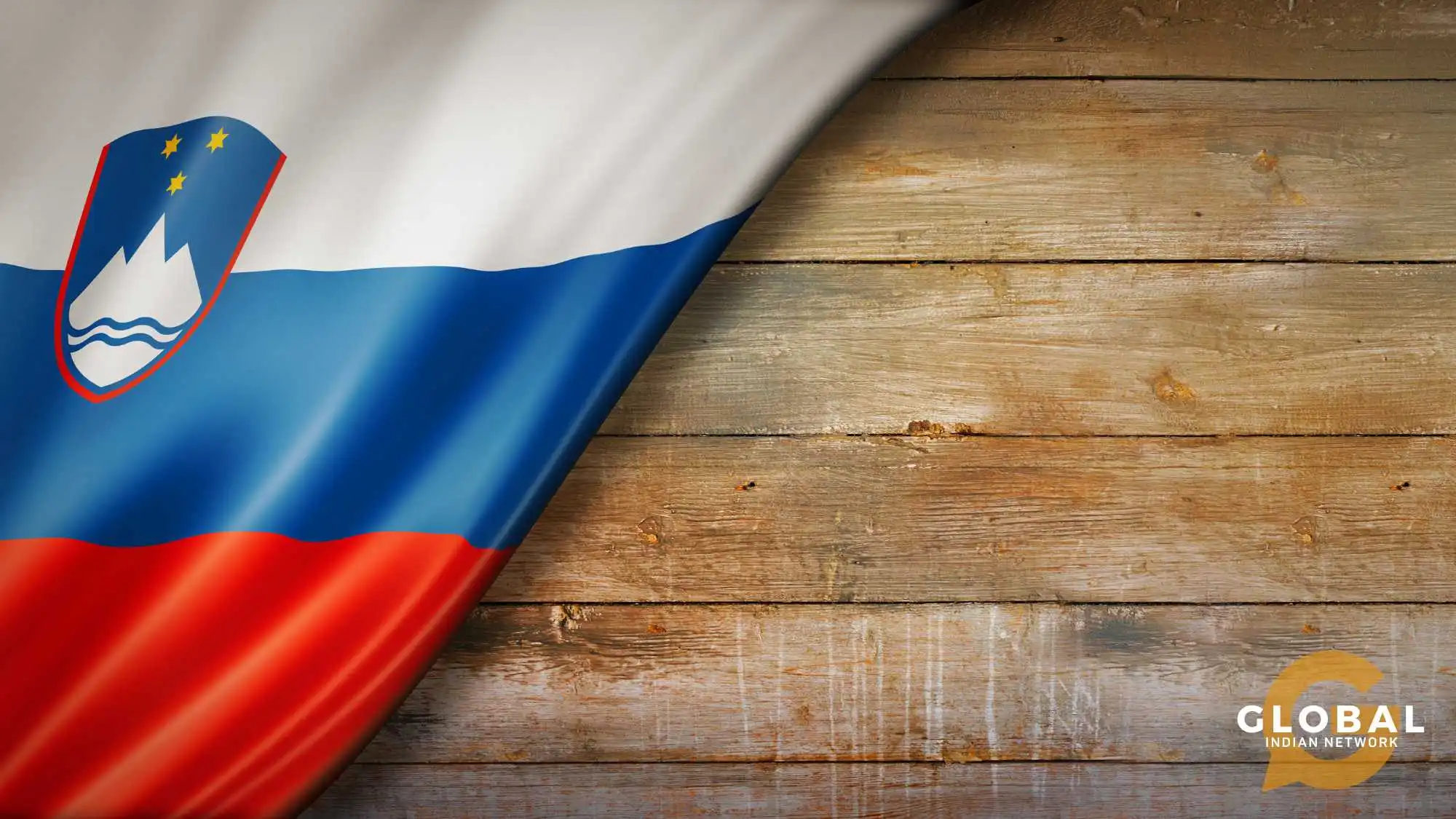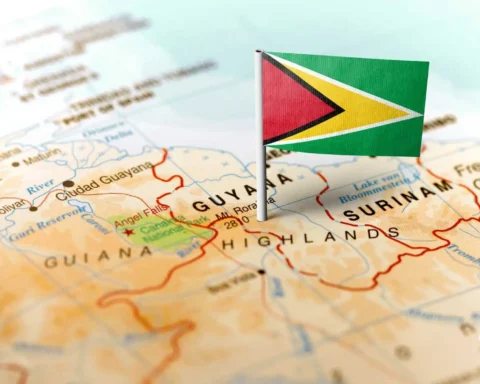Much of the stunning landscape of Slovenia can be attributed to its forests. The interplay of blue skies, the green cover, and the beautiful lakes paint a picturesque scene. Imagine the forest cover vanishing! Unthinkable, right? Fortunately, that will not happen, thanks to the Slovenian government's efforts.
The once-successful Slovenian wood industry experienced a continuous decline until the ice storm of 2014. The storm initially impacted the Slovenian wood-processing industry negatively. Subsequent recovery efforts and public support led to a resurgence, showcasing the sector's adaptability and contribution to overall industry stability.
The timber industry is promoting the use of Slovenian roundwood, unprocessed logs, and poles as a sustainable construction material. The term ‘roundwood’ refers to logs, poles, and other wood materials that have not been processed or shaped and are still in their natural state as harvested from the forest. The industry is actively advocating for the use of Slovenian wood and boosting its commercial utilisation to contribute to sustainability.
In this article, we take you to the woods to give you a wholesome picture of the forest and not just the trees. This implies that the focus is on the utility value of the forests to the people, wildlife, and the economy.
Listen To This Podcast: Is Slovenia the Emerging Logistics Goldmine in 2024? Insights from Natasa Pogacnik
Table of Contents
Forest Cover
Slovenia is known for its rich forest heritage, with forests covering more than 60% of its land area. The forests in Slovenia are characterised by a variety of tree species, including beech, fir, spruce, oak, and pine. Slovenia's forests are home to diverse wildlife, including bears, wolves, lynx, and various bird species.
Slovenia boasts one of the highest forest coverage in Europe, with around 1.2 million hectares of forests. The total growing stock of Slovenian forests amounts to 338 million cubic meters, consisting of 46.5% coniferous and 53.5% deciduous trees. The popular coniferous trees are pines, spruce, cedar, and fir. Deciduous trees that are mostly seen are beech, birch, oak, and maple. Around 70 native tree species can be found in Slovenia. The forests are highly productive.
Slovenia has designated approximately 8% of its forest area as "protective forests," a commitment to conservation and sustainable management. These forests focus on safeguarding the ecological, social, and economic functions of the forest ecosystem, preserving biodiversity, protecting soil and water resources, mitigating natural hazards, and maintaining ecosystem resilience. They also serve as recreational areas and contribute to local communities' well-being. Slovenia's emphasis on protective forests reflects its commitment to balancing the multiple benefits of its forest resources while ensuring their long-term viability and health.
The annual wood increment is approximately 8.5 million cubic meters. Each citizen has access to about 1.2 million hectares of forests, which equates to 0.6 hectares per person. The rate of felling, particularly in private forests, falls short of the allowable felling outlined in forestry management plans, amounting to 70% of allowable felling and 40% of the current increment.
The recommended forest cover in Slovenia is 50% for ecological functions like biodiversity, carbon sequestration, and soil protection. However, ideal cover varies based on forest type and location, and balancing economic benefits with ecological objectives is crucial.
Read This Article On: Slovenian Wood Industry: Sustainable Forest Management
Privately Owned Forests
The majority of forestry owners in Slovenia are private individuals, holding approximately 76% of the nation's total forest area. This significant percentage emphasises the value of private forest ownership to the country. However, local governments own only 3% of the remaining forest area, with the state owning 21%. It is evident from this distribution that most of Slovenia's forests are owned and maintained by private individuals.
Slovenia's private forest holdings are relatively dispersed, averaging only 2.9 hectares in size. Every holding is usually subdivided into several distinct plots. This fragmentation makes it more difficult for private forests to be managed professionally and to make the best use of their wood resources, especially given the 431,000 owners and co-owners.
Contribution of Forestry to GDP
The forestry and logging sector in Slovenia is relatively small, contributing around 2-3% of the total GDP, and engages only 6 percent of the population. The value of roundwood production in Slovenia fluctuates depending on various factors like timber prices, demand, and government policies.
The value of purchased roundwood in November 2023 was EUR 4.3 million, which was about 17% less than the previous month due to lower quantities of purchased roundwood. The value of different types of roundwood, such as sawlogs, veneer logs, pulpwood, other industrial roundwood, and wood fuel, also decreased compared to the previous month.
Compared to November 2022, the value of roundwood purchased from private owners in November 2023 decreased by about 28% due to a decrease in both quantities and average prices of purchased roundwood. The value of different types of roundwood also decreased significantly compared to the previous year.
Forest rent refers to the income generated from renting forested properties, such as cabins or camping sites, allowing visitors to experience nature and enjoy outdoor activities in a peaceful forest environment, as seen in the popularity of forest accommodations for rent in Slovenia. The reported forest rents as a percentage of GDP in Slovenia at 0.16199% in 2021 indicate the economic contribution of forest resources to the nation's gross domestic product.
Forest rents are economic benefits from the use of forest resources, such as timber and industries. A positive contribution to GDP is generally considered favourable. Assessing sustainability is crucial for sustainable utilisation. Forest rents contribute to economic diversification, making a diversified economy more resilient. Social aspects, such as employment and community well-being, should also be considered.
Roundwood Economy
The forestry industry in Slovenia experienced a notable surge in revenue categories, with the gross value added rising by 23% to EUR 434 million and factor income increasing by 29% to EUR 340 million. These increases signify a significant boost in the industry's revenue. The average factor income per employee was 53,738 euros. The correlation between employment, intermediate consumption, and forestry output played a crucial role in driving income growth.
The forestry output experienced a notable 23% growth, reaching EUR 765 million. This surge primarily resulted from increased values of forestry goods, driven by a slight uptick in wood assortment production and elevated purchase and stumpage prices.
Within the forestry goods output, standing timber took precedence, constituting the largest share, closely followed by sawlogs. The combined value of sawlogs and veneer logs reached EUR 229 million, contributing 30% to the overall forestry output. The production value of sawlogs saw a significant 29% increase, attributed to a modest rise in production and a notable 19% upswing in average sawlog prices.
Furthermore, the value of forestry services remained consistent with the previous year, standing at EUR 712 million. Forestry services accounted for a substantial 93% of the total forestry output, emphasising their significant role in the overall forestry sector.
This information highlights the complex interplay between production levels, pricing dynamics, and the contribution of different forestry goods and services that affect the forestry sector's economic performance.
Wood Product Manufacturing
A variety of wood products, including plywood, lumber, flooring, veneers, trusses, and prefabricated buildings, are produced at the wood product manufacturing unit. Sawing, planing, shaping, laminating, and assembling logs into bolts or lumber are all included in this process. Before wood shapes or lumber are assembled into completed goods like wood containers, the process entails processing the wood. The unit excludes any wooden fixtures or furniture.
Read This Article On: Slovenia’s Wood Industry: Climate Change Mitigation
Wood Products
The sustainably managed forests produce high-quality wood, such as mountain maple and spruce. These are used to manufacture musical instruments, furniture, and yachts. The program, named Restorative Environmental and Ergonomic Design (REED), promotes sustainability and warrants the long-term usability of local timber.
Several private players have invested in the erection of timber buildings, kitchen implements, and specialised furniture. In November 2023, manufacturing production fell by 0.4 percent compared to the same month in 2022. The highest of 39.5 percent was achieved in April 2021. The lowest recorded was in April 2020 (-28.70 percent).
Current Slovenian Wood Business
Export Markets (Wood and Wood Products)
The current export business includes Italy (19 %), Germany (15 %), Austria (13 %), Croatia (7 %), and the United States (3 %).
Export Products (Wood and Wood Products)
The current products constitute sawed or chipped wood (18 %), wooden furniture (6 %), articles of wood (6 %), veneered panels (5 %), and wood pellets (4 %).
Slovenia exports sawn wood, which is used in construction, furniture, and other industries, including plywood, particleboard, and fiberboard. Wood pulp is used in paper and packaging, while processed wood products like wood pellets and chips are used in heating and energy generation. Slovenia is known for its high-quality wooden furniture, including doors, windows, and wood-based consumer goods.
Read This Article On: Slovenian Wood Industry: Sustainable Business Prospects
Export of Plants
EU plant exports must adhere to phytosanitary regulations, with inspections conducted by plant health authorities and certification governed by International Phytosanitary Standards (ISPM). Slovenia's Administration for Food Safety, Veterinary Sector, and Plant Protection provide phytosanitary inspections and certificates for export or re-export, requiring exporters to adhere to import regulations, register in FITO, and submit certificates 24 hours before shipment loading. The phytosanitary certificate, issued by the National Plant Protection Organization, certifies quarantine pest absence and compliance with import laws.
You Might Be Interested In: Slovenian Economic Recovery: Post-COVID Challenges and Reforms
Conclusion
The Slovenian wood industry is a crucial sector that utilises traditional expertise and innovative technologies to sustainably manage its abundant forest resources, encompassing forestry, wood processing, and producing various wood products for domestic and export use.
Slovenia's wood industry, fueled by sustainable forest management, value-added wood products, and green technologies, is a significant contributor to economic growth and environmental stewardship, positioned to meet global demand for sustainable materials.
Wood is healthy, clean, CO2-neutral, and renewable. Wood is the future, not just for Slovenia but for the world. That is the moral of the forest story.










